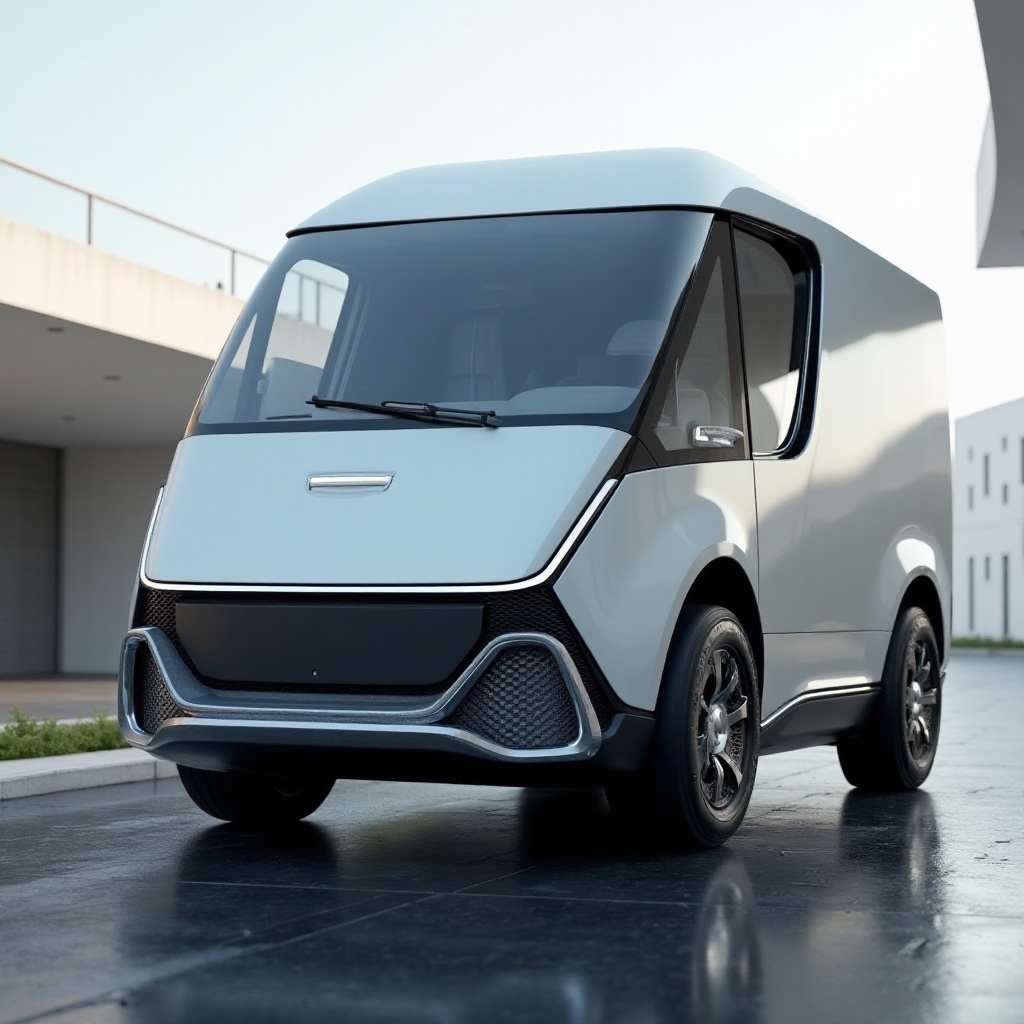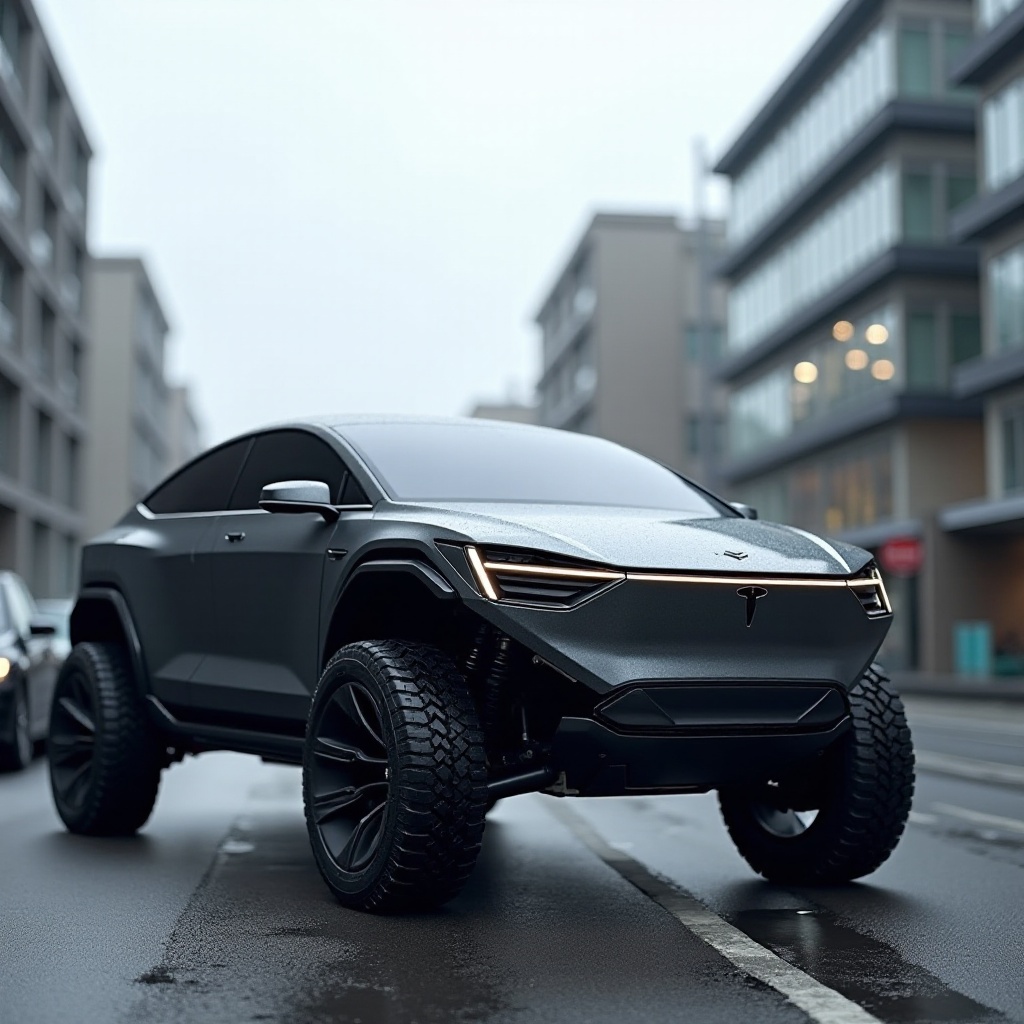Introduction
The recent incident involving the Cybertruck’s rear bumper has sparked considerable discussions among automotive enthusiasts and industry experts alike. This event not only highlights potential design flaws but also raises critical questions about the durability and engineering of new energy vehicles (NEVs). For Tesla, renowned for its innovation and pioneering spirit, such an incident could have far-reaching implications. In this article, we will dissect the details of this mishap, analyze the response it garnered from the public, and explore its impact on Tesla’s brand. Moreover, we will extrapolate valuable lessons for other NEV manufacturers and suggest ways to enhance vehicle durability in future designs.

The Incident Unpacked
The incident where the Cybertruck’s rear bumper ripped off occurred during a routine driving scenario, unsettling both Tesla enthusiasts and critics. Eyewitnesses reported that the truck encountered a minor collision, resulting in the complete detachment of the rear bumper. Videos and images of the dislodged bumper soon flooded social media, igniting a firestorm of debates about Tesla’s build quality and robustness. This unexpected event was particularly shocking given the Cybertruck’s reputation for being rugged and indestructible. Understanding the circumstances that led to this failure is crucial for assessing the risks and mitigating similar issues in NEVs.
Design and Engineering Analysis
The Cybertruck’s design has been one of its most distinctive features, characterized by sharp angles and an exoskeleton made from ultra-hard 30X cold-rolled stainless steel. However, the bumper incident has brought the engineering aspects under scrutiny. Upon close examination, it appears that the fasteners and attachment points of the bumper might not have been as resilient as the rest of the vehicle. It is conceivable that the combination of high stress and suboptimal fastening methods contributed to the bumper’s detachment. Moreover, the innovative materials used, while being robust in theory, might have introduced unforeseen complexities in practical scenarios. Engineering teams now have the task of re-evaluating these elements to prevent future occurrences.

Public and Consumer Reactions
The public and consumer reactions to the Cybertruck bumper incident were swift and multifaceted. Tesla owners expressed concern about the vehicle’s integrity, while potential buyers seemed hesitant, awaiting further clarifications. Social media platforms buzzed with criticism, memes, and technical evaluations from automotive experts and laypersons alike. Despite the negative backlash, some loyal customers defended the brand, attributing the issue to an isolated incident rather than a flaw in design. Overall, the incident has undeniably impacted consumer confidence, illustrating the critical nature of maintaining consistency in product quality, especially for innovative brands like Tesla.
Impact on Tesla’s Brand and Market Perception
Tesla has long been a symbol of cutting-edge technology and futuristic design. However, incidents like the rear bumper detachment can temporarily tarnish its pristine image. The market perception of Tesla has taken a hit, with stock fluctuations following the viral reports. Investors and analysts have raised questions about the durability of Tesla’s newer models, which may affect short-term sales. Nonetheless, Tesla’s established reputation for quick problem resolution and innovation provides a buffer to rebound from such setbacks. It is essential for Tesla to address these quality concerns transparently to restore and maintain consumer trust.
Lessons for Other New Energy Vehicle Manufacturers
The Cybertruck incident serves as a valuable lesson for all NEV manufacturers. It underscores the importance of rigorous testing and quality assurance in all design aspects, regardless of innovative features or materials. Other manufacturers should take heed of the repercussions Tesla is facing and prioritize enhancing the robustness of their vehicles. Additionally, transparency in communication with the public when addressing defects can mitigate potential loss of consumer trust. Building a strong foundation of reliability will be crucial for the broader acceptance of NEVs in the future automotive landscape.

Future Design Directions for Enhanced Durability
To prevent similar incidents, future NEV designs should focus on a multi-faceted approach to enhance durability. This includes:
-
Enhanced Fastening Techniques:
Developing more resilient fastening methods for critical components to withstand high stress scenarios. -
Material Testing:
Conducting extensive real-world tests on innovative materials to identify and mitigate any potential weaknesses. -
Quality Control Protocols:
Implementing stringent quality control measures at every production stage to ensure the highest standards are met. -
Consumer Feedback Integration:
Actively integrating feedback from consumers to identify practical issues that may not surface during pre-launch testing.
These strategies will help in forging robust and dependable NEVs that can withstand unforeseen stresses, ensuring long-term customer satisfaction and trust.
Conclusion
The Cybertruck rear bumper incident, while unfortunate, provides critical insights for Tesla and other NEV manufacturers. It highlights the need for rigorous engineering, testing, and a steadfast commitment to addressing consumer concerns promptly. Moving forward, the lessons garnered from this mishap can drive the evolution of more durable and reliable new energy vehicles.
Frequently Asked Questions
What caused the Cybertruck’s rear bumper to rip off?
The detachment was primarily due to suboptimal fastening methods and high-stress conditions that the bumper was unable to withstand.
How did Tesla address the rear bumper issue?
Tesla has initiated an internal investigation and is working on enhancing the fastening techniques to prevent such occurrences in the future.
What are the implications for future New Energy Vehicle designs?
The incident emphasizes the need for rigorous testing, robust fastening techniques, and the importance of integrating consumer feedback to ensure vehicle durability.
